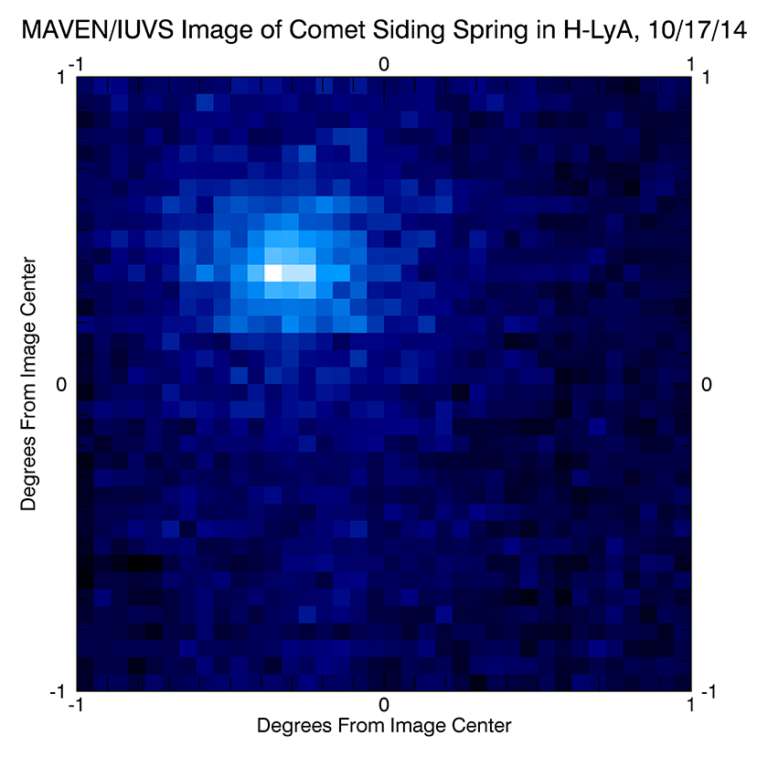MAVEN view of comet Siding Spring at Mars

The bulk of the scattered sunlight shows a cloud that was about a half degree across on the "sky" background, comparable in size to the Earth's Moon as seen from Earth. Hydrogen was detected to as far as 150,000 kilometers away from the comet's nucleus. The distance is comparable to the distance of the comet from Mars at its closest approach. Gas from the comet is likely to have hit Mars, and would have done so at a speed of 56 kilometers per second. This gas may have disturbed Mars' atmosphere.


 Explore Worlds
Explore Worlds Find Life
Find Life Defend Earth
Defend Earth

